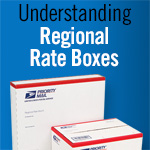 Duties and taxes – the mere words evoke dread in the hearts and minds many online sellers. Fortunately, getting a handle on both of these facts-of-business-life isn’t nearly as daunting as you may think. While rates and requirements vary widely depending on the item itself and localities involved, online sources make it easy to decipher the jargon and manage your sales.
Duties and taxes – the mere words evoke dread in the hearts and minds many online sellers. Fortunately, getting a handle on both of these facts-of-business-life isn’t nearly as daunting as you may think. While rates and requirements vary widely depending on the item itself and localities involved, online sources make it easy to decipher the jargon and manage your sales.
Your favorite online marketplace or shipping service can help with specifics, but here’s an introduction to the necessary paperwork that keeps your online store running and regulated.
What are customs?
Customs varies from jurisdiction to jurisdiction, but in a nutshell, it’s the agency or authority that sets and collects customs duties, as well as keeps an eye on the flow of goods in and out of the country. Customs and import duties are applied once merchandise reaches its country of destination.
What are duties?
Duties – also known as tariffs – are taxes levied by the government on the value of an item, plus freight and insurance. While these taxes are one of many that help support individual jurisdictions, duties also serve as a kind of consumption tax to control purchasing and protect the interests of local businesses. Duties amounts vary by country (averaging roughly 5 percent) and can include national sales and local taxes as well as customs fees. How this applies to you as a seller is that tariffs increase your buyers’ costs. If you factor in duties ahead of time, you can price your items appropriately – both to drive sales and help inform your buyers.
What are taxes?
Sales taxes are financial charges imposed by individual jurisdictions. Sales taxes generate state revenue; since tax rates vary widely as a seller, it is up to you to learn the requirements – if any – of your location. Remember, it’s your civic duty!
How are customs, duties and taxes calculated?
As stated above, these amounts vary a great deal depending on many factors, but there are lots of online resources that do the math for you. The U.S. Census Bureau (www.export.gov) sponsors a free online tool to help you identify the Harmonized System (an internationally recognized standardized system for traded goods classification) or Schedule B (export statistics collected and compiled by the U.S.) number for your product. With this number in hand, you can determine what you will pay in tariff and tax rates for the country to which you’re shipping.
Who is responsible for paying customs, duties and taxes?
The buyer of your product is typically responsible for paying these extra costs. However, you can improve sales if you are able to eliminate any surprises in costs. If a buyer purchased a product from you for $50, but then couldn’t afford the $150 their country customs/duties/taxes required, you’d have an unhappy customer, so help defray these costs by factoring these additional expenses into your product price. You wouldn’t want an inflated price tag to deter savvy shoppers from an international sale.
Policies Per Country
Customs vary by country. Here are some examples of what your buyer would have to pay in customs/duties/taxes to receive a product:
Tips to Remember
- Help estimate extra fees for buyers. Your customers appreciate it! If you state upfront what customs, duties and taxes generally run your international customers, they can make informed decisions about purchasing. Encourage prospective buyers to contact you, refer them to your pricing source, or offer the most complete information possible as part of the listing.
- Alert buyer to longer shipping times. The extra step of customs clearance adds time to your shipment window. Give your buyers a heads-up about possible delays, provide tracking numbers (if possible) for their convenience, and work additional days into your shipping policies as extra insurance against disappointment at the other end.
- Think twice before marking “Gift” on your customs form. Don’t risk prosecution as a favor to your buyer: Marking sold merchandise as a “gift” is against the law if the item is truly not a gift from you to the recipient. Make sure you complete your customs forms according to the product being shipped.
- Thoughtful packaging is key. Your items have a long journey ahead of them, with more than a few stops along the way. Package and pad them securely, and protect the mailing and return addresses with clear tape in case of any transit or clearance problems.
The Bottom Line
The extra steps required for international sales are intended to keep lines of communication clear, prevent paperwork problems and help get the product into the buyers hands as fast as possible. Now that you understand the reasoning behind the charges, sell across borders with clarity and confidence.







